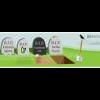Tools you will need to do the swap:
Trolley jack that can get your car high off the ground
Chassis stands
Long breaker bar
Short breaker bar
10, 12, 14, 17 & 19mm sockets & spanners (ring & open-end)
At least a 12 & 14mm “hex” six-sided socket (grips stubborn bolts better)
Pliers
10mm allen key
Pipe to go over breaker bar
A couple of cans of Inox ($10ea from Repco/etc)
Hammer
Pin punch
Time taken:
If it goes smoothly (normally never does) figure on 3hrs from drive-in to drive-out. It can take 12+ hours though with complications.
How:
This is a DIY that can save you some coin, but cost a lot of stress as well as requiring both careful planning and some experience to carry out.
Get your fluids and clutch ready to go in before you start. I normally also buy a spare flywheel and get it machined so it is ready to go. Have lots of tools on hand as you’ll likely need a selection of half-inch and three-eighth sockets, including deep “impact” sockets.
Put simply, it is an over car and under car exercise that requires at least 1 other helper, normally 2. If you have a hoist and a gearbox stand, you are a lucky sod and I think you should punch yourself in the throat for being more fortunate than I.
On the top side, you’ll need to remove everything that stops you seeing the gearbox. This means the following bits need to come off, and I suggest you go in this order:
Top-mount intercooler (if you’re a sucker
Pitch-stopper
Turbo heat shield
Bellhousing bolts
Clutch slave cylinder
Unplug the 02 sensor, reverse switch and the speedo drive.
Top turbo dump pipe
Starter motor
The bellhousing, turbo, clutch slave and pitch-stopper bolts are all 14mm and a good idea is to soak the turbo dump bolts in Inox before you start. In total there should be three 14mm nuts on the back (one on each side, and one in the middle on the bottom), plus two bolts with nuts in the top of the dump pipe. They’ll need quite a bit of Inox and it is vitally important when undoing these bolts and the bellhousing bolts that you seat the socket ABSOLUTELY on the nut.
If they don’t want to turn, even with a breaker bar and pipe, try hitting the bar to “shock” the nut loose. You just need it to crack to break the seal, and from there you can undo them. Be warned, dump pipe bolts will OFTEN round and are then completely useless. To remove the dump pipe completely you will need to get under the car, so from here we move to the clutch fork…
On the passenger side, look down beside where the starter motor sits, and on the gearbox you’ll see a hex-headed hole for the clutch fork. Stick a 10mm allen key or 10mm hex-socket in that and undo it (could be very, very stiff), then find a small bolt/screw to wind into the threaded hole behind the plug. Wind it in 10 or so turns and then pull on the bolt to pop the rod out. It might need some force, so a trick I often employ is to get a large flat-blade screwdriver and lever it out. Lift the fork up to pull it out of the throwout bearing. It should slop around loosely when its disengaged.
Now it is time to jack the car up and get down like James Brown (ie: on your back not moving much). You’ll need the rear wheels off the ground at some point, so you may as well jack the car right up and put stands underneath each corner in the proper locations. You’ll need the car fairly high, so be careful when doing this as the car could pivot forward/rearward on the stands, over-balance and fall off.
Drain the gearbox oil now. Go on, get!
Underneath, you’ll need to get the remaining bellhousing bolts out (there are x8 bellhousing bolts used in total on post-99 ‘boxes, x4 in total on earlier ‘boxes) as well as removing the CV shafts from the ‘box, undoing the shifter linkages, dropping at least the front half of the tailshaft and then removing the gearbox cradle.
I start with the CVs, so undo the 14mm bolt on the hub that holds the ball joint and control arm to the bottom of the hub. It faces out the front of the car (looking from the front you’ll see it) and sits in the skinny bit near the base of the hub. Once it is undone, undo the front swaybar from the end links (to make moving the control arms easier), then put a long piece of sturdy pipe on the crossmember, braced off the floor and give it some hard pulls down to pull the balljoint out of the hub.
Now to take the rollpins out of the CV shafts. Have a look at the gearbox end of the CV shaft near the ‘box and you’ll see where it steps down and becomes quite thin in diameter. Spin the shaft until you can see a small opening, grab your punch and hammer the rollpin out of the shaft. You can now get an assistant to pull the wheel/hub backwards to pull the shaft off the gearbox stub (you’ll probably need to help it a bit).
You will need to do this on both front shafts, though please note that some cars have plug-in CVs and the method is a little different as they don’t use rollpins: you get a tyre iron/crowbar and pop the shaft out by levering it in short, sharp jerks.
You can now easily remove the bottom bellhousing bolts and can also remove the bottom dump pipe bolts and drop the pipe. On some cars you might also need to pop the rest of the exhaust system off its hangers to allow sufficient access to the tailshaft, which is what we come to now...
You need to remove at least the front half of the tail shaft, but some cars have a one-piece shaft so you might have to drop the whole thing. If you have a two-piece you just need to remove the four 12mm nuts/bolts in the middle, then the two 14mm bolts for the mount. Then, slide it out the back of the ‘box and watch out for the fluid that’ll leak out - I jam a cap from an aerosol can in there to stop the fluid (an old wrecker trick). Put it somewhere nice. Not Mexico, that is too far away, Pedro you idiot! If it is a single-piece unit you’ll need to remove the bottom cover for the diff snout (eight 14mm bolts) and then get the 12mm in there, before undoing the centre mount and dropping the shaft. Get your 12mm ring spanners out and head back to the shifter mechanism. You need to undo a nut on one rod, and then you need to undo a nut/bolt on the upper rod (which can be a pain in the rectum to get to).
I now pull the cradle off the box as it makes removal/installation of the 'box much easier. Looking at the cradle, in the middle you should see the rubber mount attached to bottom of the 'box. Underneath there are two 14mm nuts. Undo them and then stick the trolley jack under the ‘box (not the cradle) and start undoing the four 14mm bolts at the back of the cradle, moving forward to the big 17mm jobbies once the back ones are out.
Hopefully once they’re out you can lower the jack a smidge and see a split appearing between the engine and box. There are 2 large studs coming out of the bottom of the motor that the gearbox sits on, PLUS there are 2 small steel locating studs that sit at 3 O’clock and about 7 o’clock on the bellhousing. These expand and help hold the motor and box together. They also help stop it from splitting.
Some suggested methods to getting the motor/box to divorce like Charlie Sheen and Denise Richards is to place a piece of 4x2 under the bellhousing and then shake the motor up/down, or wiggle the gearbox, or punching the driver’s side locating stud out the back of the bellhousing (not the passenger side as it can’t be punched completely out and will get stuck in the head).
Once the seal is broken it is a matter of checking everything is disconnected from the ‘box, and then wiggling the box off the bottom studs and carefully removing from your vehicle. I generally undo the two 14mm nuts holding the engine mounts on, but don't remove them totally - You need to ensure the engine mount studs stay located in their holes. The reason I do his is angles - the whole 'box removal/installation job is all about getting the right angle for the 'box's input shaft to slide out of the back of the clutch, which is attached to the motor. Sometimes you need to crank the motor back to give the gearbox an easier path out/in.
Once the 'box is out, if you have some chain, sling one eyelet through one of the motor studs and then once you have cracked/removed a pressure plate bolt (12mm and there are about eight of them) you can use this to hold the flywheel from spinning. The pressure plate also has locating studs to stop if falling off but be careful nonetheless. The flywheel uses a few 14mm bolts and you’ll need to use that chain trick to hold it in place, too.
You should see the rear-main seal now. Ideally, you would want to replace it as they get old and leak like sieves. However, be very careful fitting a rear main seal as if you don’t do it correctly and it pinches your engine will leak oil like a stomach hit by a large calibre slug at close range.
Start reassembling the shebang with the machined flywheel (complete with new spigot bearing that you should tap in with a 22-24mm socket). Once you have fitted it and put a couple of the bolts in by hand, hand-fit the rest of the bolts, before torquing them up in a cross-hatching motion (like wheel nuts). Some people also use Loctite on their flywheel bolts for extra security.
With the flywheel done up, you can loosely fit the clutch disc and pressure plate. Leave the throw-out bearing off the pressure plate (we’ll fit that later) and just do the bolts up loosely so the clutch is securely held to the flywheel but the plate can move freely. You now want to get your clutch aligning tool (I have the snout off my old dead 5MT’s input shaft) to seat the snout of the tool in the spigot bearing, thereby holding the clutch plate in the right position – I shouldn’t need to explain why this is important.
With the tool left in place, do up the rest of the bolts (which should have Loctite on them) to torque, in the same cross-hatching manner as the flywheel. Once done, remove aligning tool, have a beer.
Fit the throw-out bearing to the clutch fork, and then refit the clutch fork stopper rod to the box, so the fork is held in the correct position with the throw-out bearing ready to engage the clutch when slid into position. The stopper rod needs to slot firmly into the tab in the opposite side of the ‘box so ensure it is seated correctly. Slide it as far back as possible.
It is now time to get your grunt on and lift the box into position. I’d use a jack to support it while you manoeuvre it around the shifter linkages, crossmember and trans tunnel. You also have to make sure the input shaft lines up with the clutch, and that the bottom engine studs slide through their holes correctly. This is all about getting the right angle so that the motor and ‘box can slide/wiggle together. Try jacking the motor back so it leans towards the ‘box coming up, try wiggling the ‘box on, and also try using a 22mm socket and breaker bar on the crank to spin the clutch as there might be some sticky-icky-icky-ness there. Whatever you do, don’t wind the motor and gearbox together on the bolts as you’ll smash the spigot bearing. I know this from being a n00b and doing it that way. When the motor and box are back together, move the clutch fork forwards forcefully and with great gusto to snap the throw-out bearing into position in the pressure plate. It should click together like BAM SH*T, DAT MY HOMEBOY YEEEEEAAAAHHH WHAAATTTSKEET *****…
Time to reverse what I’ve posted above, starting with the crossmember. Now be careful with the 17mm front bolts as there is a captive nut in the chassis that is easy to snap off. If you do that, this means you have to pull out the seat, pull up the carpet, cut a hole in your floor, reweld the captive nut, reweld the floor and then try doing it up again. Fun! I’ve also stripped the thread in one of them and had to Helicoil it…
Following crossmember start going through this list in order by fitting the clutch slave cylinder, then bellhousing, shift linkages, tailshaft and diff cover (if removed). CV joints are next and if the CV roll pins aren’t going in, make sure they are lined up 100% PERFECTLY with the holes in the gearbox stubs. Even 1 tooth out means they won’t go in. After CVs, attach the hubs, which are similarly needy and the ball joint must be aligned for it to go in properly. They’ll take a bit of fiddling, but will get there eventually.
Fit the dump pipe, starter motor (your 10mm allen key bit should already be in), then drop the car off the stands and move to reconnecting starter motor wiring, plugging everything back in, doing top bellhousing bolts, top dump pipe bolts, turbo heat shield, pitch stopper, fill with fluid (do it before intercooler goes on as it is much easier) and then refit the intercooler, taking care not to split hoses and making sure everything is both properly done up and seated correctly.
























